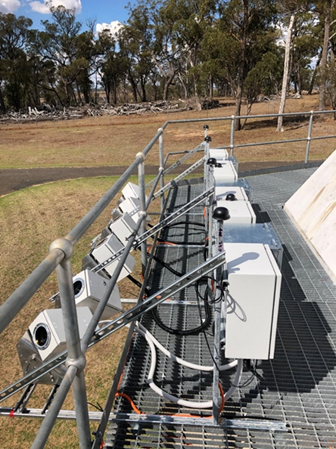As space becomes cheaper, easier to access, and hence more congested (in terms of the number and type of space objects in orbit around the earth), the Australian Defence Force is embarked on a new mission to establish a comprehensive understanding of the space domain. Defence has made clear its requirement for assured access to space control through the development and deployment of resilient and sovereign space capability.
At Lockheed Martin Australia Space, we have, with our partners, pioneered a new sovereign technology to meet these critical requirements. In 2018 Lockheed Martin Space and Curtin University jointly announced successful harnessing of technology previously used to observe meteorite fireballs and applied it to track satellites.
FireOPAL is a wide-field-of-view sensor that offers accurate and persistent surveillance of the space domain at all orbital regimes – low, medium, and geostationary. Jointly developed with Curtin University, the system is Australian designed, built and operated and poised to serve as a foundational element in Australia’s Space Domain Awareness network.
Compared with traditional mechanisms for tracking satellites – for example, optical or infrared telescopes, which can track one object at a time – a single FireOPAL sensor can track more than 100 objects simultaneously, enabling literally thousands of observations each hour. FireOPAL leverages commercial-off-the-shelf hardware to enhance cost-effectiveness and scalability. The system is ruggedised and easily transportable for flexible operational deployments, or alternatively deployable in fixed arrays that offer national level coverage.
Perhaps most importantly, FireOPAL has been designed in ways that make it compatible with a range of other sensors, as well as with diverse mission systems that underpin command and control of the space mission.




